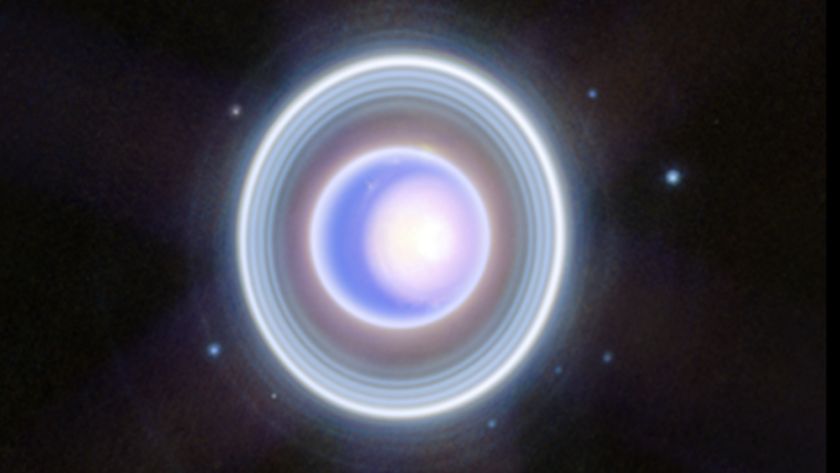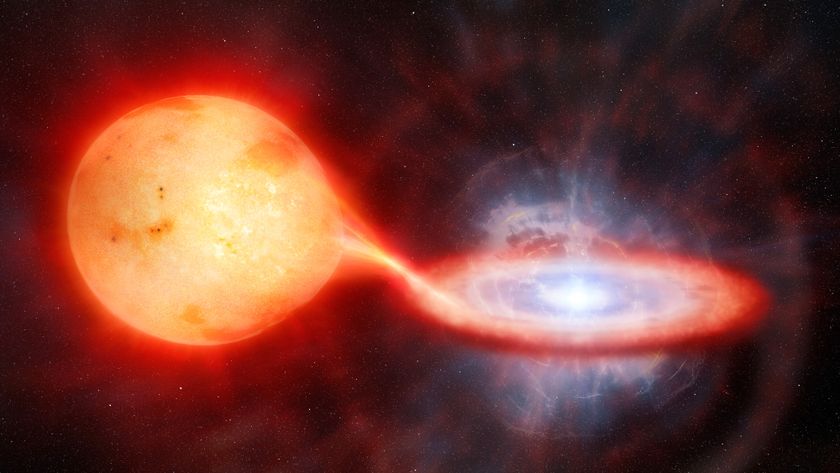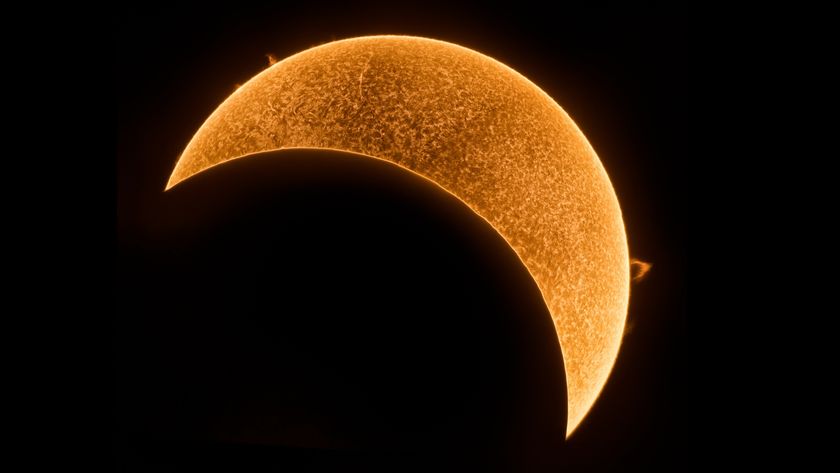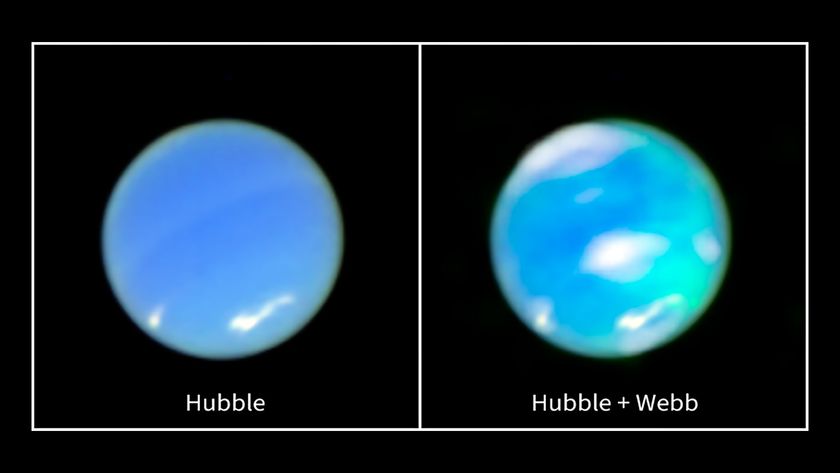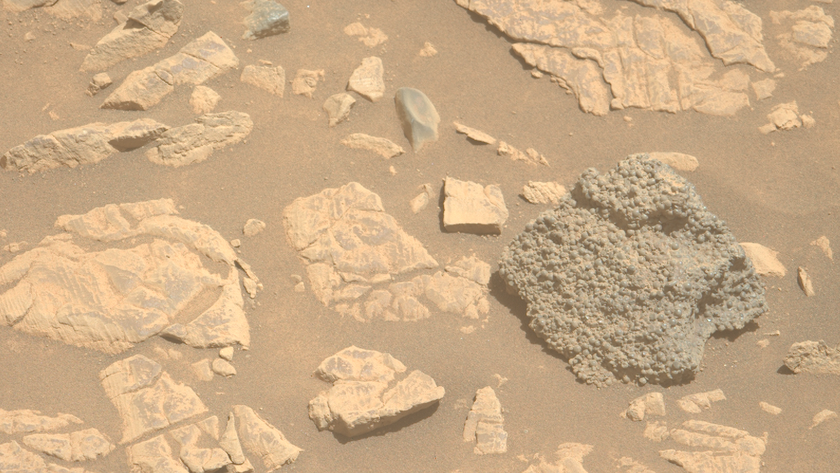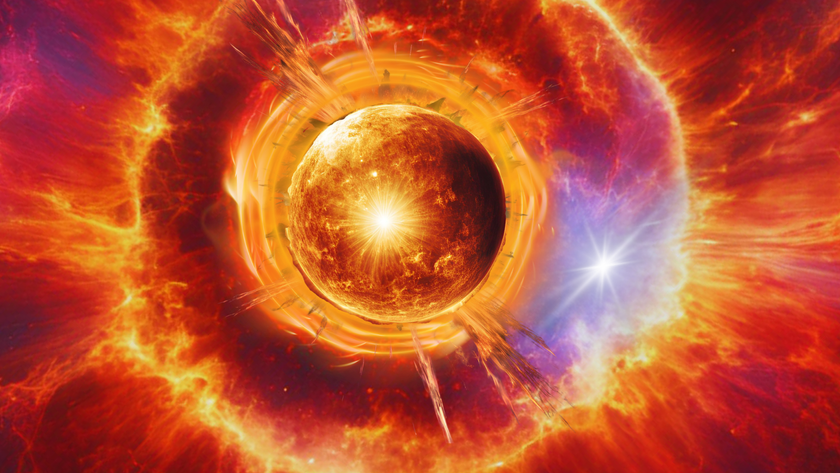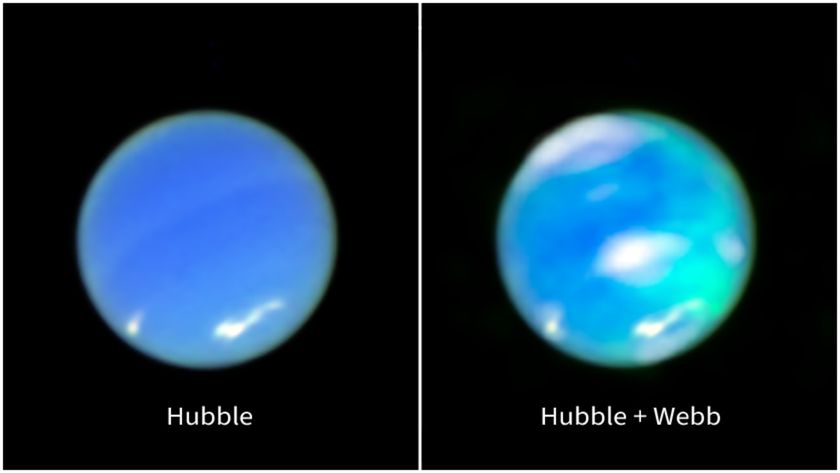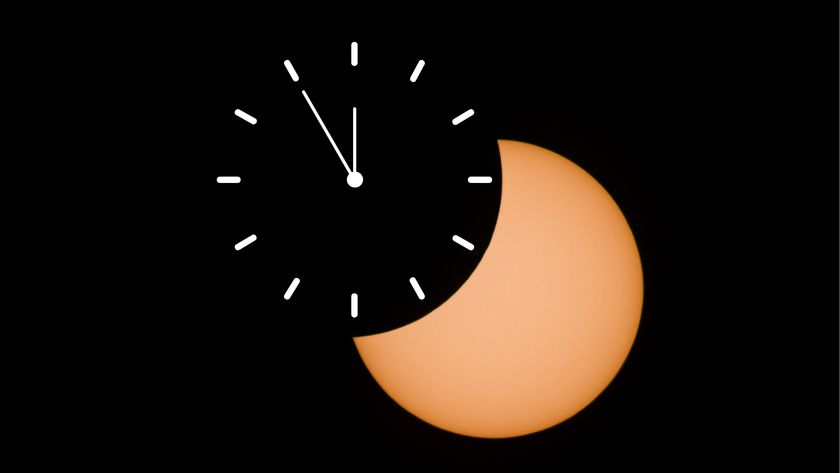The rings of Uranus look positively festive in epic James Webb Space Telescope holiday photo
This new portrait of the seventh planet from the sun reveals more of the atmosphere's workings as it nears its solstice in 2028.
They may not be the gold rings from "The Twelve Days of Christmas," but Uranus and its rings stand resplendent in this stunning portrait from the James Webb Space Telescope (JWST).
It's the second image of Uranus that the JWST has captured this year. The first, released in April, was a two-toned affair composed of imagery captured at infrared wavelengths of 1.4 and 3.0 microns. This new image adds extra wavelengths, specifically 2.1 and 4.6 microns, to give a much more complete overview of the seventh planet from the sun.
The new JWST Uranus image doesn't just show the planet, however. Uranus' aforementioned rings shine bright in infrared light, and the JWST's optics have even resolved the elusive, diffuse inner Zeta-ring. Many of Uranus' 27 moons are also on display; the cropped view shows some of Uranus' smaller, fainter moons including some embedded within the rings, while the wider view shows Uranus' five large moons: Ariel, Miranda, Oberon, Titania and Umbriel.
Related: Rings around Uranus! James Webb Space Telescope captures stunning image of ice giant (photo, video)
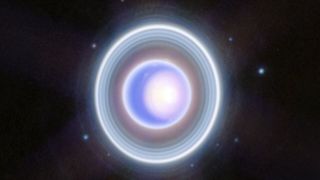
The extra wealth of detail in these new images places Uranus' north polar cap in the spotlight. Unlike Earth and Mars' polar caps that are made from solid ice, Uranus is a gaseous world and its polar caps are hazy haloes of aerosols that hang high in its atmosphere.
The JWST's new image shows Uranus' north polar cap almost directly facing us (and therefore also facing the sun), with a bright spot at its center and a dark collar, both of which have previously been seen in infrared and radio-wavelength observations, but never with this clarity before. The bright spot, seen as white in the new JWST, is warmer than its surroundings and is the center of a huge cyclonic vortex.
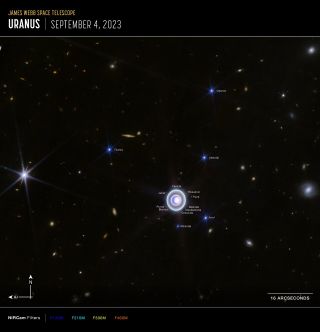
Bright storms are also visible blowing their way around the polar cap, and are believed to be at least partially caused by seasonal variations. Uranus is a really odd planet, in that for reasons unknown it rolls around the sun on its side, tilted by 98 degrees to the plane of the ecliptic (the plane of the orbits of the other planets). Rather than its poles being 'on top' of the planet, we see them head-on, and this brings with it unique climatic conditions that astronomers are eager to witness with the JWST in the run up to Uranus’ northern summer solstice in 2028.
Get the Space.com Newsletter
Breaking space news, the latest updates on rocket launches, skywatching events and more!
It is at the solstice that the weather in the planet's polar cap becomes most active. Uranus' tilt means that for about a quarter of a Uranian year, which is 84 Earth-years long, one pole is in constant daylight and the other in enduring night. Right now the north pole is facing us, but in 2070 it will be the turn of Uranus' southern pole to bask in what passes for summer at such a great distance from the sun (2.96 billion kilometers/1.83 billion miles).
It seems strange now to think that back in 1986 when NASA's Voyager 2 mission flew past the ice giant, the general consensus was that blue–green Uranus appeared a bit boring, with a bland atmosphere that was a let down after the smorgasbord of atmospheric tumult seen on Jupiter and Saturn. Little did planetary scientists realize that at infrared wavelengths, which allow us to view beneath the featureless haze, Uranus has a lot going on, as the JWST's advanced vision shows.
Besides providing the best data yet for planetary scientists trying to figure out how Uranus’ atmosphere works, the observations will also prove vital in honing the scientific questions to be asked by a future mission to Uranus.
The recent Planetary Science and Astrobiology Decadal Survey highlighted a mission to Uranus as its number one priority. Orbital alignments mean that a mission, which will take over a decade to reach Uranus, will need to launch by 2030; planetary scientists are still nervously awaiting the go-ahead from NASA.
Until that time, we’ll just have to settle for the remarkable images that the JWST has to offer.
Join our Space Forums to keep talking space on the latest missions, night sky and more! And if you have a news tip, correction or comment, let us know at: community@space.com.

Keith Cooper is a freelance science journalist and editor in the United Kingdom, and has a degree in physics and astrophysics from the University of Manchester. He's the author of "The Contact Paradox: Challenging Our Assumptions in the Search for Extraterrestrial Intelligence" (Bloomsbury Sigma, 2020) and has written articles on astronomy, space, physics and astrobiology for a multitude of magazines and websites.
-
rod Excellent ring images in this article. My 10-inch Newtonian telescope does not show Uranus like this but it did not cost me some $10 billion or more too :) Uranus ring system age is much younger too, these reports suggest 10^7 or 6 x 10^8 years old.Reply
The rings of Uranus are being held back by its pesky moons, https://forums.space.com/threads/the-rings-of-uranus-are-being-held-back-by-its-pesky-moons.63773/
Wikipedia indicates at least 600E+6 years old. Rings of Uranus, https://en.wikipedia.org/wiki/Rings_of_Uranus, "The rings of Uranus are thought to be relatively young, and not more than 600 million years old. The Uranian ring system probably originated from the collisional fragmentation of several moons that once existed around the planet. After colliding, the moons probably broke up into many particles, which survived as narrow and optically dense rings only in strictly confined zones of maximum stability."
My note, this age is much younger than the 4.56 Gyr solar system age used based upon radiometric dating of various meteorites. Saturn ring system is considered young perhaps 100E+6 years old or younger, Jupiter, Uranus. What about Neptune ring system age too? Ring systems around Jupiter, Saturn, Uranus, and Neptune suggest recent catastrophism in the solar system involving various impact scenarios as well as very young ages too.
